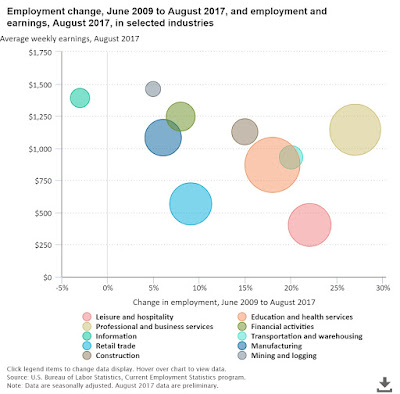"For generations, the career path for smart kids around Detroit was to get an engineering or business degree and get hired by an automaker or parts supplier. If you worked hard and didn’t screw up, you had a job for life with enough money to raise a family, take vacations and buy a weekend cottage in northern Michigan.
Now that once-reliable route to prosperity appears to be vanishing, as evidenced by General Motors’ announcement this week that it plans to shed 8,000 white-collar jobs on top of 6,000 blue-collar ones.
It was a humbling warning that in this era of rapid and disruptive technological change, those with a college education are not necessarily insulated from the kind of layoffs factory workers know all too well.
The cutbacks reflect a transformation underway in both the auto industry and the broader U.S. economy, with nearly every type of business becoming oriented toward computers, software and automation."
Continue reading the article online (subscription may be required)
https://www.milforddailynews.com/zz/news/20181201/salaried-workers-beware-gm-cuts-are-warning-for-all
This is not new. One can debate as to when this phenomenon started but I'd posit that it began in earnest with the great recession in 2007-2008.
I was affected at that time in late 2008, one of 3,000 cast off by a giant in financial services. Note, the company is still a giant in financial services.
The Bureau of Labor maintains the stats on unemployment and while the 'one' rate is easily quoted, there are other rates that are more insightful to showing what is happening with the work force.
The six state measures are based on the same definitions as those published for the U.S.:https://www.bls.gov/cps/cps_htgm.htm
- U-1, persons unemployed 15 weeks or longer, as a percent of the civilian labor force;
- U-2, job losers and persons who completed temporary jobs, as a percent of the civilian labor force;
- U-3, total unemployed, as a percent of the civilian labor force (this is the definition used for the official unemployment rate);
- U-4, total unemployed plus discouraged workers, as a percent of the civilian labor force plus discouraged workers;
- U-5, total unemployed, plus discouraged workers, plus all other marginally attached workers, as a percent of the civilian labor force plus all marginally attached workers; and
- U-6, total unemployed, plus all marginally attached workers, plus total employed part time for economic reasons, as a percent of the civilian labor force plus all marginally attached workers.
This PDF shows the unemployment rate for 2013 to 2017. I'll have to spend some time to put it together to show the year over year changes. This only depicts the stats for the individual years https://www.bls.gov/lau/maps/maseries.pdf
The Bureau of Labor also provides an outlook for careers based upon the stats they have acquired. https://www.bls.gov/careeroutlook/
 |
| The chart shows the percentage change in employment for selected industries from June 2009, the end of the recession, through August 2017 |
https://www.bls.gov/careeroutlook/2017/data-on-display/wage-gains-by-industry.htm